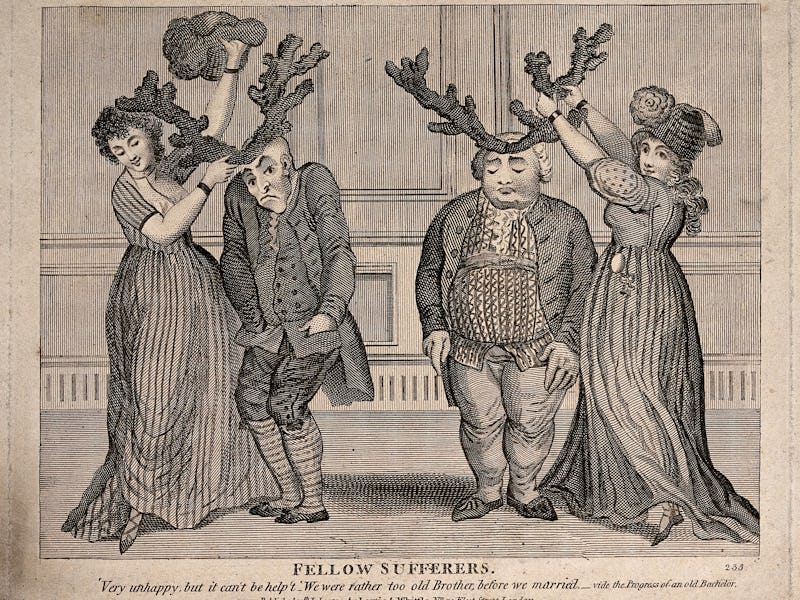Cuckolded Males Aren't Always Biology's Losers
In some animals, cuckoldry is beneficial for everyone involved.

Cuckoldry is generally not a good thing. Tracing its etymology to cuckoo birds, which sometimes lay their eggs in other birds’ nests, cuckoldry occurs when a male’s female partner surreptitiously has kids with another male. The unwitting cuckold often ends up raising kids that aren’t his own, which in many cultures is seen as the ultimate embarrassment for males (hence the alt-right slur “cuck”). But cuckoldry is very common in some animals, and as new research shows, it can be beneficial for all parties involved.
A study published Wednesday in BMC Biology outlines an unusual species where cuckoldry happens at “extremely high” rates and, oddly, happens among related males. Variabilichromis moorii fish live in the waters of Lake Tanganyika in Africa, where females lay a clutch of 200-500 eggs in rock crevices right before the full moon. They’re monogamous species, so females pair up with a male, lay their eggs, and then wait for their male partner to fertilize them. But very often there’s scandal, and a relative of the male partner swoops in and fertilizes the eggs, producing a cuckold in the process.
Counterintuitively, that makes total sense to biologists.
These fish are notorious cuckolders. Though cuckoldry is generally thought to be bad for biological fitness, the behavior persists in their species.
“At first glance, this is evolutionarily puzzling because when males are related, we typically expect them to compete less with one another, not more,” said Kristina Sefc, Ph.D., the corresponding author of the paper and a researcher at Karl-Franzens-Universität Graz in Austria. In the study, the team sampled babies from 70 broods, back-engineering their genomes to figure out who their real dads were. The level of cuckoldry was astounding: The males associated with 60 out of the 70 broods had been cuckolded. But even more amazing was the fact that the cuckolds were “more related to their cuckolders than expected by chance,” as the team writes.
Scientists previously observed some truly wild cuckoldry going on in this species. “Up to 100 percent of nests can contain extra-pair offspring, and the number of extra-pair sires per brood can sometimes surpass 10 males,” the team writes. This is confounding because biological fitness is all about the ability to pass down genes, and getting cuckolded is a very good way to not pass on your genes. But in this species, the authors propose, maybe the males are looking out for the genes of their family more broadly. There are a lot of males trying to cuckold one another — not just relatives — so if anyone’s going to cuckold a guy, it might as well be someone who shares his genes. At least that way, some of the family genes get passed on, rather than none of them.
A whole lot of V. moorii eggs, probably fertilized by a lot of different males.
“This ‘banding together’ of related males makes sense, however, when spawning events involve many males, including lots of unrelated males,” said Sefc. “Then, the male relatives essentially work together to compete against the host of unrelated males.”
It’s an interesting look at a behavior that (fortunately — can you imagine the drama?) isn’t common in human societies but still widespread in nature. For biologists, it could prove to be an important new perspective. While so much of our concept of biological success is rooted in any individual’s ability to have kids, these fish and their cuckolding cousins remind us that there’s more than one way to pass on genes in the animal kingdom — as long as the humiliation isn’t too much to bear.